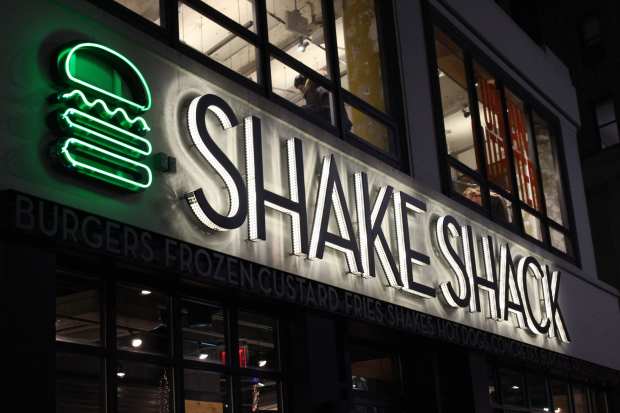Shake Shack Looks To Better Delivery Amid Q3 Results

Same-store sales increased only 2 percent for quick-service restaurant (QSR) operator Shake Shack in the third quarter of 2019, disappointing investors. The chain’s revenue increased some 32 percent year over year, though, hitting nearly $159 million, and meeting analyst expectations.
The latest QSR earnings report comes amid massive technological changes in that world as restaurant operators seek to improve all facets of their operations via mobile and digital technology. But investors had hoped to see same-store sales increase by 2.5 percent. As well, the chain’s traffic increased by 1.2 percent, another apparent sore spot.
Even so, Shake Shack CEO Randy Garutti touted the company’s recent growth.
“This has been the biggest development year in Shack history as we’ve grown our presence around the country and internationally in the new markets of Mainland China, Singapore, the Philippines and Mexico,” Garutti said. “In 2020, we will continue to expand even further within key domestic and international markets. Overall, we continue to execute this year’s plan while gearing up for the key strategic initiatives of 2020. We’ll be focused more than ever on putting our people first, simplifying and supporting our operations, and enhancing our winning guest experience.”
New Delivery Push
Delivery is on area that the chain is trying to beef up.
To make its food more accessible to consumers via an increasing number of channels, Shake Shack recently entered into an integrated partnership with Grubhub. The online and mobile food ordering and delivery marketplace, as well as its Seamless brand, will be the national delivery partner of Shake Shack, with direct to point of sale (POS) integration for order submission as well as menu syncing, the burger chain said in an announcement.
Through Grubhub’s “Just in Time” technology, pickups will be timed to the moment an order is ready to help ensure fresher food, quicker delivery and a better guest experience. The burger chain will have access tools to look into performance as well as ordering trends.
The restaurant company will also benefit from dedicated resources for customer and operational support provided by Grubhub’s enterprise support team. The two firms will also engage in joint marketing initiatives that “will generate connections with new guests and drive order frequency for existing fans,” according to the announcement.
Delivery of Shake Shack via Grubhub and Seamless is currently in test mode, and is available to guests at a small number of restaurant locations. A nationwide rollout will “continue gradually” over the next two to three quarters, bringing the company’s menu items — such as the ShackBurger, frozen custard shakes, Chick’n Shack and crinkle-cut fries — to more customers “whenever and however they want it,” per the announcement.
Shake Shack is operation that has become known not only for its food, but also for its recent push to eliminate cash transactions (a push that has attracted its own backlash, underscoring the fact that not everyone is quite ready to go fully digital in the early 21st century). Shake Shack also stands as a broader example of a QSR operation that is trying to advance the digital frontier, in large part because it serves a customer base that is probably more digitally-focused than other QSRs: urban-based, largely millennial and demonstrably mobile order-ahead friendly.
Shake Shack’s bets on mobile are also paying off, according toPYMNTS research, including via the QSR’s revamped mobile app, The company has been working to improve its digital technology and delivery, and recently hired its first chief information officer.
Indeed, that reflects wider trends in the QSR world — trends that that will play a big role in restaurant revenue in the coming year.
